Showcase
Making a difference
We’re not interested in innovation for innovation’s sake — we back technologies that promote the social good. Learn more about our companies’ impact below. To watch more videos of startups funded by NSF, visit our YouTube playlist.
View on Youtube.
Engineering bacteria to treat skin disease – Azitra
Azitra, a small business funded by the National Science Foundation (NSF), is harnessing the microbiome to treat skin disease. To learn more visit: https://azitrainc.com/.
New engine tech allows diesel engines to run on any fuel – ClearFlame Engine Technologies
ClearFlame Engine Technologies, a small business funded by the National Science Foundation (NSF), has developed a novel engine technology that allows diesel engines to run on any fuel. To learn more visit: https://www.clearflameengines.com/.
View on Youtube.
View on Youtube.
Shape-shifting robots provide real-time data in disasters - Squishy Robotics
Squishy Robotics is developing mobile sensor robots for use in disaster rescue, remote monitoring, and space exploration. To learn more visit: https://squishy-robotics.com/.
Learning math using music and psychology – Muzology
Muzology is developing a learning platform to help students learn math. Grounded in psychology, Muzology’s platform helps students learn algebra concepts with music. To learn more visit: https://www.muzology.com/.
View on Youtube.
View on Youtube.
From plastic trash to 3D printing– re:3D
re:3D makes large-scale, industrial 3D printers that can print from plastic waste. The company’s open-source and affordable printers can grind, dry, and feed plastic waste into the 3D printer, Gigabot X (GBX). The company hopes to address local needs by creating a circular economy. To learn more visit: https://re3d.org/.
Improving surgical outcomes with machine learning
KelaHealth combines a patient’s data and machine learning to reduce surgical risks. Its platform reduces surgical complications by using patient data and predictive algorithms to create “tailored risk profiles” for patients before surgery.
To learn more visit: https://www.kelahealth.com/.
View on Youtube.
View on Youtube.
Transforming waste carbon dioxide into useful products
Opus 12 created a device that recycles waste carbon dioxide (CO₂) into chemicals and fuels.
To learn more visit: https://www.opus-12.com/.
Small, wearable device to reduce workplace injuries
Kinetic created a small, wearable device to reduce common workplace injuries. Loaded with sensors that detect motion, twisting, bending and lifting, the device is attached to the belt or waistband of construction, factory or delivery workers. If the device detects improper biomechanics – bad posture or lifting stance – it will “buzz” to alert the worker to correct his or her stance and avert common back injuries.
To learn more visit: https://www.wearkinetic.com/.
View on Youtube.
View on Youtube.
Insects as an alternative protein source for animals
Beta Hatch is industrializing the production of insects as an alternative protein to feed animals. Its technology can mass-produce mealworms and use their waste as fertilizer.
To learn more visit: http://betahatch.com/.
Accessible, multisensory content for visually impaired students
Vital is developing touchscreen-based software that translates visual educational content into accessible, multisensory content for students with special needs. Software created by Vital is allowing students with visual impairments, autism, dyslexia or ADHD to use their sense of touch to explore content like tables, graphs or maps on a tablet. They feel vibrations and listen for audio cues and text-to-speech to learn visual content mostly in math and science subjects.
To learn more visit: https://www.vital.education/.
View on Youtube.
View on Youtube.
Blood cleansing device removes pathogens
Path Ex is developing a device to remove pathogens from blood and treat drug-resistant bacteria and endotoxins from circulating blood, which could be used in the treatment of bacteremia and sepsis.
To learn more visit: https://pathex.co/.
Innovative concrete masonry systems
Spherical Block is using concreate masonry construction to build affordable, efficient homes. The New York-based company’s manufacturing can create walls, roofs, arches, windows, domes, and spheres.
To learn more visit: https://www.masonryarches.com/.
View on Youtube.
View on Youtube.
Recycling CO2 into fuels
Dimensional Energy uses sunlight to convert carbon dioxide (CO2) into energy. Mimicking photosynthesis, Dimensional Energy’s Hi-Light Reactor uses concentrated sunlight and catalysts to turn CO2 and water into raw materials which could be used to create fuel.
To learn more visit: https://dimensionalenergy.com/.
A wearable, personal thermostat
Embr Labs developed a wearable device to moderate temperature control. Americans spend most of their time indoors. By using its wearable device, Embr Labs could ultimately help cut energy consumption and make people more comfortable. The company uses a battery-powered, thermal-electric cooler to create sensations of heating or cooling on a person’s skin.
To learn more visit: https://embrlabs.com/.
View on Youtube.
View on Youtube.
3D-printed shoes
OESH, a small business funded by the National Science Foundation (NSF), is developing 3D printers to create shoes that are healthy by design.
To learn more visit: https://oeshshoes.com/.
'Moxi' the robot that supports nurses – Diligent Robotics
Diligent Robotics, a small business funded by the National Science Foundation (NSF), created “Moxi,” a robot that supports clinical staff teams in acute care hospitals by executing logistical tasks so staff can focus on direct human care.
To learn more visit: https://diligentrobots.com/.
View on Youtube.
View on Youtube.
Sustainable ink from algae
Living Ink Technologies, a small business funded by the National Science Foundation (NSF), is developing ink from algae cells. The Colorado-based biomaterials company is “changing the way pigments are made” to use algae as a colorant. Its sustainable algae products could replace ink made from petroleum.
To learn more visit: https://livingink.co/.
A cheaper, easier way to test for malaria
For many in sub-saharan Africa, finding out if a fever is due to Malaria often means trekking long miles to a clinic for a relatively pricey blood test, and anxious hours of waiting before the results come in. But the Urine Malaria Test kit developed by Fyodor Biotechnologies has begun to change all that.
To learn more visit: https://www.fyodorbio.com/.
View on Youtube.
View on Youtube.
Device to treat stress urinary incontinence in women
Elidah created a medical device to help women with stress urinary incontinence - the inability to control the urge to urinate - a condition which impacts about one in three women.
To learn more visit: https://www.elidah.com/.
Monitoring internal and external network performance - ThousandEyes
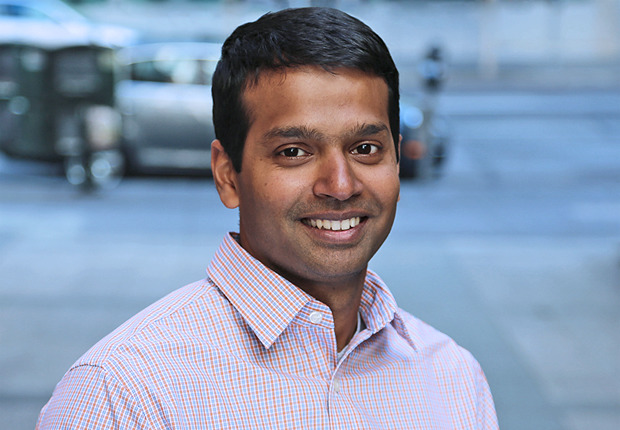
Mohit Lad, CEO & Co-Founder of ThousandEyes
“The grants we received from NSF were instrumental in bootstrapping ThousandEyes and allowing us to focus on building the first version of our product and acquiring customers. By the time we raised our series A from Sequoia capital, we had a handful of well-known brands as customers with annual bookings of more than $250k, i.e. real revenue. Thanks to NSF, we were on our way to commercializing our technology.” -Mohit Lad, CEO & Co-Founder of ThousandEyes, a network intelligence platform for businesses, was founded by Lad and Ricardo Oliviera in 2010. In 2018, they have 220 employees and have raised nearly $110 million.
ThousandEyes delivers Network Intelligence—performance visibility and actionable insights on digital experience for every user and application over any network. It arms network engineers, operations teams, support/service desk staff, developers, and even business users with an accurate, up-to-the-moment understanding of the link between application delivery and underlying network dependencies and behaviors– both inside and outside the organization.
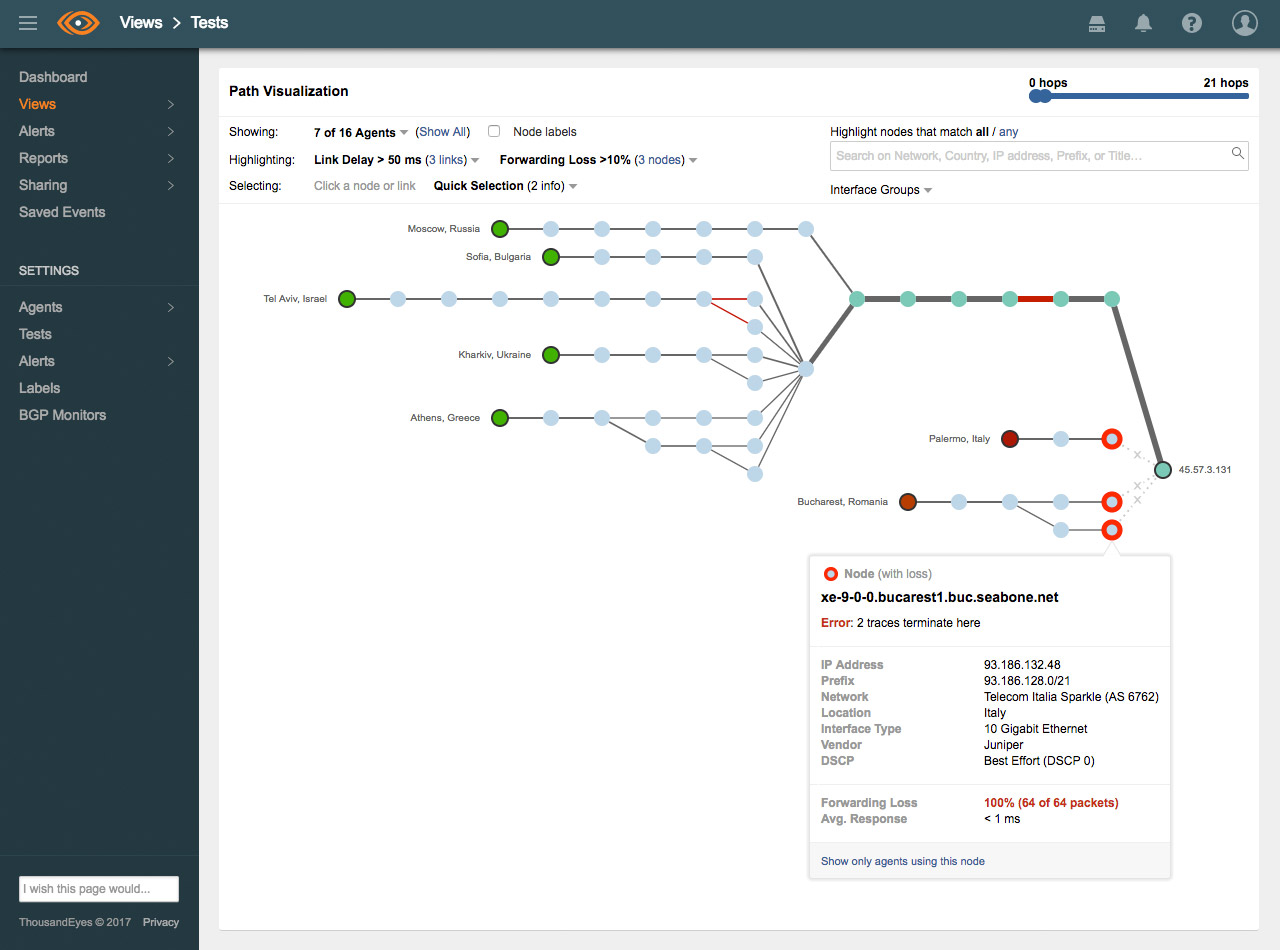
ThousandEyes' patented Path Visualization provides detailed hop-by-hop visibility and performance metrics from any network, even if it's outside your enterprise boundaries. A global inference engine correlates multiple streams of data and visually pinpoints the location of outages (shown as red circles), and provides additional contextual information about the specific location.
Robots that create custom mosaics - Artaic

“Without NSF funding, my company wouldn’t have been able to get off the ground. Early on, when we were too young and too risky for venture funding, NSF filled the gap with an SBIR Phase I grant. Now, after our Phase II is completed, we are a viable growth stage company that employs over 30 people and serves clients globally. The best part— our product is having a positive impact on society, giving people access to an ancient art form that was previously too costly and complex to create and install.”
Ted Acworth
Founder and CEO of Artaic, a small business funded by NSF, that designs and fabricates custom mosaic tile installations using robots.
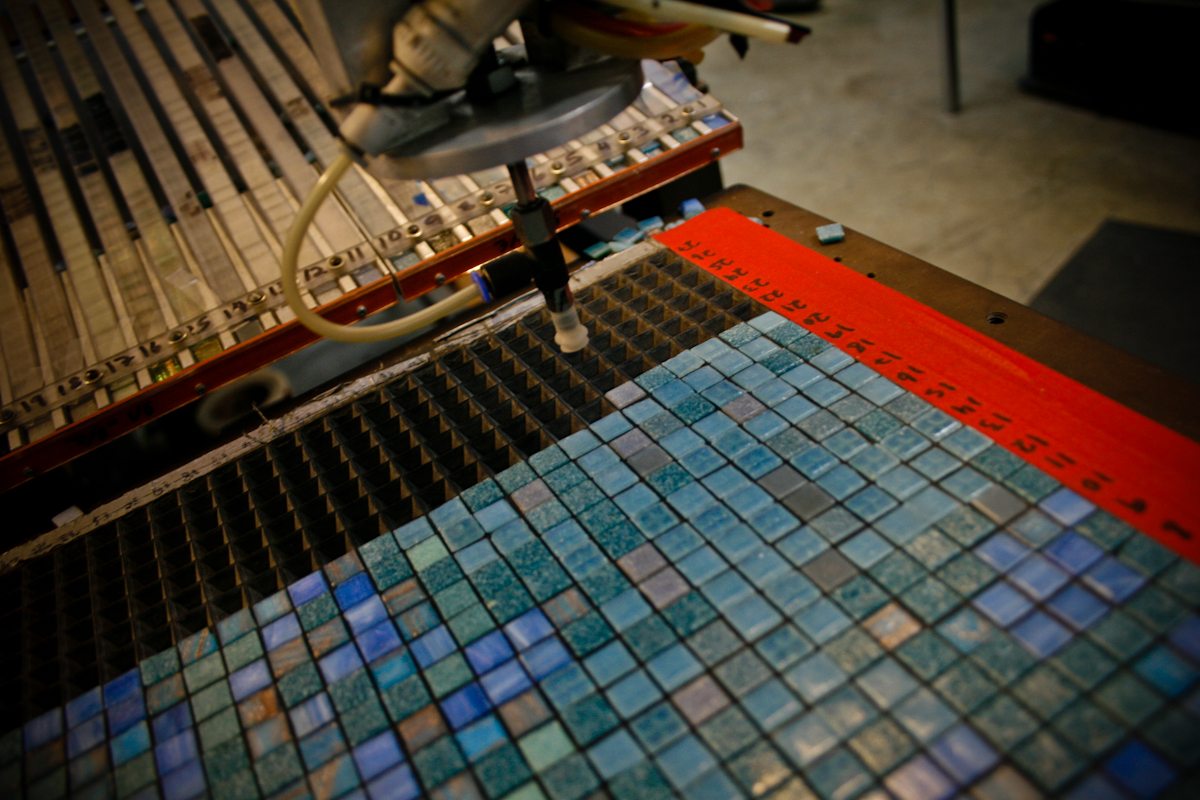
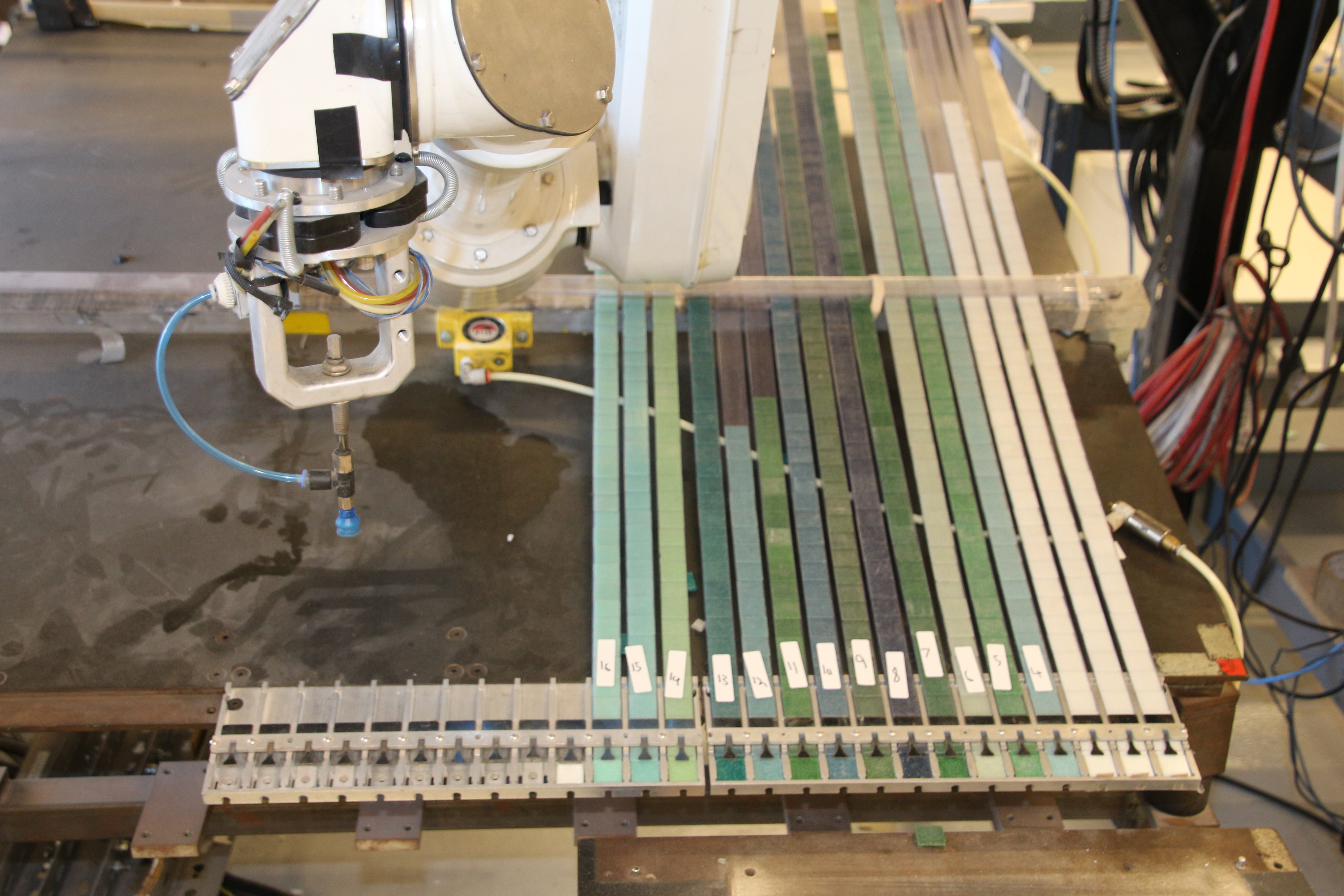
AI helps medical professionals interpret, perform ultrasounds
Caption Health (formerly known as Bay Labs) uses artificial intelligence to help medical professionals perform and interpret ultrasounds.
To learn more visit: https://captionhealth.com/.
Online access to mental health therapy
TAO Connect provides online mental health therapy.
To learn more visit: http://taoconnect.org/.
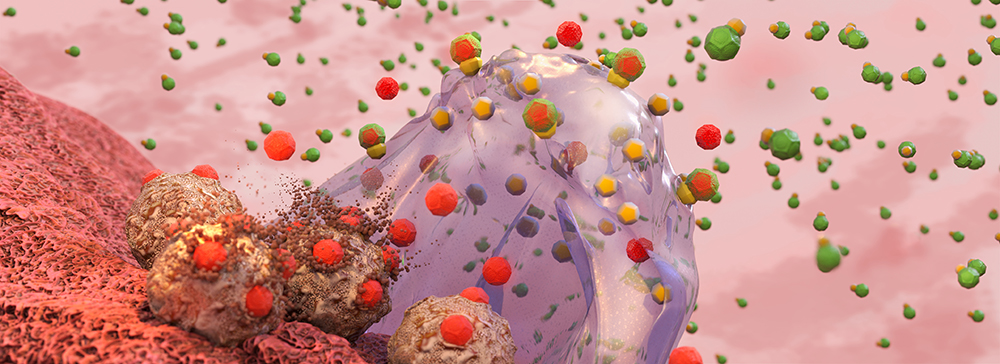
A polymer material (blue) targets drug activation of doxorubicin (red) to tumors, minimizing toxicity because the drug is shielded while in the blood (green).
New drug delivery technology for tumor treatment
Shasqi, a small business funded by the National Science Foundation, is developing a new way to deliver drugs to specific locations within the body to more effectively treat diseases such as cancer. The team, led by physician and chemist Dr. Jose M. Mejia Oneto, has created a targeting system that could enable effective therapy with lower doses of drugs and fewer harmful side effects.
The system works by first injecting a gel at the treatment site. The gel contains chemicals that combine with and activate an injected, attenuated form of a drug, such as a chemotherapeutic, to trigger its cancer-fighting effect only at the tumor or other targeted tissue. The experimental treatment has been successfully tested against tumors in mice, which experienced tumor shrinkage while maintaining healthier weights than mice receiving traditional chemotherapeutic treatments. Shasqi is funded by America’s Seed Fund powered by NSF. Photo credit: Shasqi
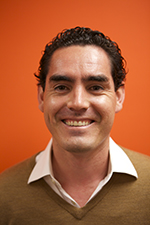
Jose M. Mejia Oneto, founder and CEO of Shasqi.
Detecting biological contaminants in water & pharmaceuticals
Spheryx, Inc. created a technology to monitor, count and characterize microscopic particles in a variety of fluids, such as water, chemicals, or even pharmaceuticals.
To learn more visit: https://spheryx.solutions/.
3D Printing Like Nature
Branch Technology combines 3D printing, industrial robotics, and conventional building materials to enable a new way to build.
To learn more visit: https://www.branch.technology/.

